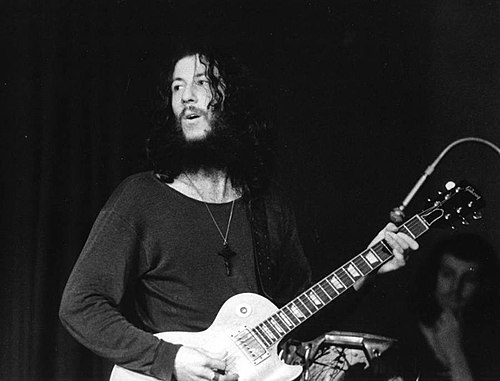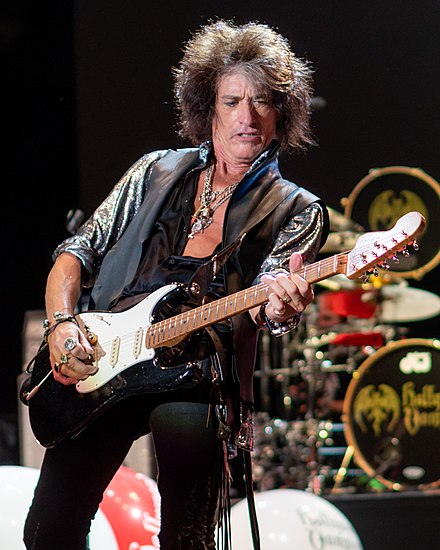
The year is 1966. You are an up and coming guitar player, living in London during the British Blues explosion. John Mayall’s Bluesbreakers, a popular band at the time, suddenly has an opening for a guitarist after their guitar player abruptly leaves the band. You get the phone call asking if you would like to join the band. Of course, you accept immediately. What could possibly go wrong? Oh, did I mention that the guitarist you are replacing is one Mr. Eric Clapton?
That is exactly how the world came to know Peter Green, a young English guitarist who, in the span of a few short years, would establish himself as one of the best guitarists of the British Blues music scene.
Peter Green, born in London in 1946, had prior stints with bands such as Bobby Dennis and the Dominoes, the Tridents, and the Muskrats but by Christmas 1965 was in a band called Peter’s B Loonies with a drummer by the name of Mick Fleetwood. The two would hit it off as the band expanded and changed its name to Shotgun Express, which featured a young singer named Rod Stewart. After subbing at a few John Mayall gigs for an absent Eric Clapton, it was July of 1966 when Clapton left John Mayall’s Bluesbreakers and Peter formally joined the band.

Mike Vernon, a producer with Decca Records, recalls Peter’s debut:
As the band walked in the studio I noticed an amplifier which I never saw before so I said to John Mayall, “Where’s Eric Clapton?” Mayall answered “He’s not with us anymore, he left us a few weeks ago.” I was in a shock of state but Mayall said “Don’t worry, we got someone better.” I said “Wait a minute, hang on a second, this is ridiculous. You’ve got someone better? Than Eric Clapton?” John said “He might not be better now, but you wait, in a couple of years he’s going to be the best.” Then he introduced me to Peter Green.


Peter immediately lived up to John Mayall’s prediction and soon friends and contemporaries were referring to him as “The Green God”. While in the Bluesbreakers Peter wrote the instrumental song The Supernatural, a remarkable song in that halfway through Peter stops and holds a note for 4 1/2 bars. While some guitarists wanted to prove how fast they could play, Peter was proud to show how slow he could play. He stayed for only one year before he left John Mayall’s Bluesbreakers to form his own band. He reunited with drummer Mick Fleetwood and recruited slide guitar player Jeremy Spencer. He called the band Peter Green’s Fleetwood Mac featuring Jeremy Spencer. For the next three years the band, who eventually shortened their name to Fleetwood Mac, would produce some of the best blues music ever to come out of England.

The band’s repertoire initially consisted of blues covers with a few originals thrown in. They recorded a debut album that, while not producing a hit single, stayed on the British charts for 37 weeks. Late in 1967 the band’s bass player was replaced by bassist John McVie and that’s when things began to take off.
1968 was a pivotal year for the band. They started to have some chart success with the first song being Black Magic Woman – yes, the same song that Carlos Santana had a hit with a few years later. Peter Green wrote the song and sang vocals. Black Magic Woman was followed by Albatross, an instrumental song also written by Peter that hit number 2 on the U.K. singles chart.
Peter had a unique guitar sound, a sound created when he accidentally put the pickup on his Gibson Les Paul on backwards after cleaning it. He loved the sound and never corrected the pickup. Albatross is a beautiful, melodic song that highlights Peter’s wonderful guitar playing. B.B. King, when asked about Peter’s guitar style, said “He has the sweetest tone I ever heard; he was the only one who gave me the cold sweats.” B.B. must have had Albatross in mind when he said those words.

An interesting tidbit about Albatross is that The Beatles used the melody from the song when writing the Abbey Road song Sun King. In a 1987 interview George Harrison was quoted as saying:
At the time, ‘Albatross’ (by Fleetwood Mac) was out, with all the reverb on guitar. So we said, ‘Let’s be Fleetwood Mac doing Albatross, just to get going.’
I can’t think of a better nod then having the greatest band in the land using your song as the inspiration for one of their songs!
As 1968 turned into 1969, Fleetwood Mac churned out great song after great song, all written by Peter. Oh Well is a song in two parts – the first part with vocals is bluesy fun with a great guitar lick while part two changes gears completely into an instrumental that stretches out to some interesting places. When it was released as a single, the A side featured the vocal part then segues into the coda from part 2 of the song which continues when the listener flips the single over to side B. The success of Fleetwood Mac at the time gave them tremendous influence with the record company to allow such an unusual arrangement to be released on a hit single.
Other hits followed, including Man Of The World and The Green Manalishi. Late in 1969 Fleetwood Mac released a live double album titled ‘Blues Jam in Chicago’, recorded at the legendary Chess Records studio. The album featured collaborations with many of the band’s blues heroes, including Otis Spain, Big Walter Horton, Willie Dixon, and Buddy Guy. Check out the tracks Last Night – sung by Peter – and the rousing instrumental Red Hot Jam (take 1). There is some great material on these sessions and I would argue that this may have been the high point for Peter Green while he was in Fleetwood Mac.
By the time the calendar welcomed a new decade Fleetwood Mac was at the top of their game. They had numerous hits, had built up a dedicated following due to their energetic live performances, and Peter was being hailed as one of the best guitarists on the scene. John Mayall’s prophecy a few years ago had come true! But all was not right with Peter. He talked to the band about giving away all of their musical earnings saying that he didn’t feel comfortable taking other people’s money. When he broached the subject with Mick Fleetwood, Mick’s reply was you can do whatever you want with your earnings, but I’m keeping mine, thank you very much.
By this time Peter was taking ever increasing amounts of LSD and his bandmates began noticing changes in his dress and in his behavior. The breaking point came in March of 1970. While on tour in Germany, Peter went to a party at a commune, took LSD, and refused to leave the commune. After Mick Fleetwood, along with other band members, went to fetch him, he eventually relented and rejoined the tour. Two months later Peter Green left the band he had founded. In a literal blink of an eye he was gone – he stopped playing music and disappeared.

Faced with going on without their founder and leader, Fleetwood Mac went through some stunning personnel changes that eventually changed the band from a great blues band to a pop band, culminating with the album ‘Rumours”. Buoyed by the additions of Lindsay Buckingham and Stevie Nicks, ‘Rumours’ would go on to be one of the highest selling albums of all time. Sadly, after joining the band, Stevie Nicks admitted that she had never heard of Peter Green and had no idea who he was.
Mick Fleetwood has never forgotten the impact that Peter Green had on, not only Fleetwood Mac, but rock music in general. He would often play early Fleetwood Mac records for friends and acquaintances, who would be amazed by a guitarist that they had never heard of while observing Fleetwood breaking down in tears while listening to the music. Five months before Peter Green’s passing, Mick organized a tribute concert for Peter. He invited Peter to attend but he did not show. Trying to find guitarists to play Peter’s music proved to be a daunting task – when Mick cold called Pink Floyd’s David Gilmour, Gilmour replied “I don’t know whether I’m able to touch Peter’s playing”. Gilmour did participate, playing on the second part of Oh Well, rarely ever having been played live.

Peter’s legacy is impressive. Musicians who cite Peter as an influence is long and diverse. A partial list includes The Beatles, Carlos Santana, Joe Perry of Aerosmith, Andy Powell of Wishbone Ash, Mark Knopfler of Dire Straits, Noel Gallagher of Oasis, Rich Robinson of the Black Crowes, and Jimmy Page.
In 1998 Fleetwood Mac was inducted into the Rock and Roll Hall of Fame and Peter attended the ceremony (I wonder if he had to introduce himself to Stevie Nicks). Peter Green is on numerous lists as one of Rock’s and Blues greatest guitar players. He passed away in 2020 at the age of 73.
Peter Green’s tragedy is unfortunately not unique in the world of music – the road is littered with musicians who succumbed to either the pressure of success, excess, or both. In Peter’s case he was eventually diagnosed with schizophrenia. He spent some time being homeless before eventually living with various family members. He tried a couple of comebacks in the late 70’s and early 80’s, but by then he was a changed man. Often standing off to the side of the stage, he hardly sang and almost never took guitar solos. He did form The Peter Green Splinter Group in the late 1990’s, and toured briefly in the early 2000’s, however nothing came close to that three year period from 1967 – 1970.
Like a shooting star, Peter lit up the sky in an incredible way for three years before flaming out and disappearing. Thankfully he left us with a beautiful afterglow in the brilliant music that he made.
That’s it for this edition of The Musical Tree! Did you like this article? Leave a comment! Have a suggestion for a Musical Tree subject? Leave a comment! In the meantime keep it positive and play it loud!
Playlists from this article:

